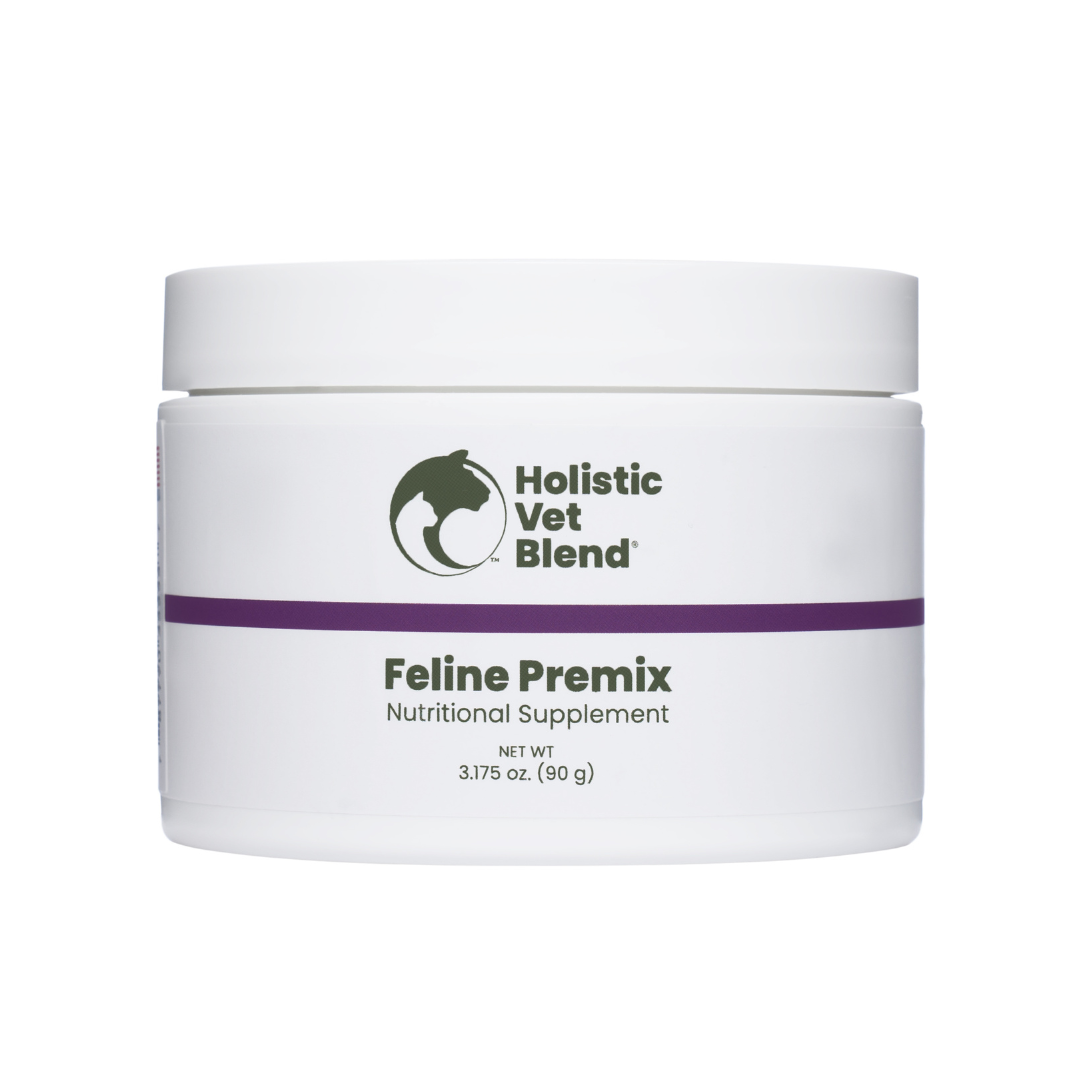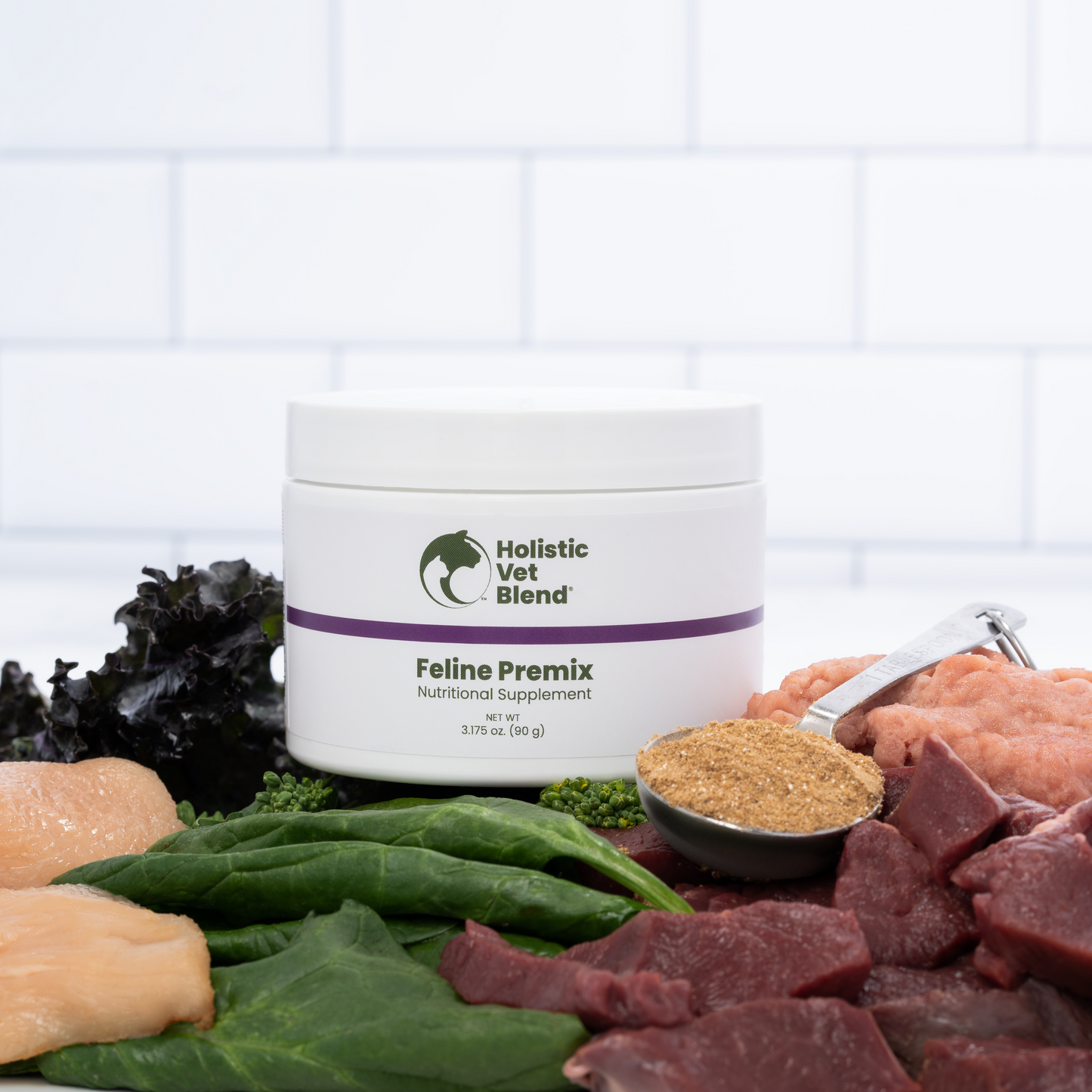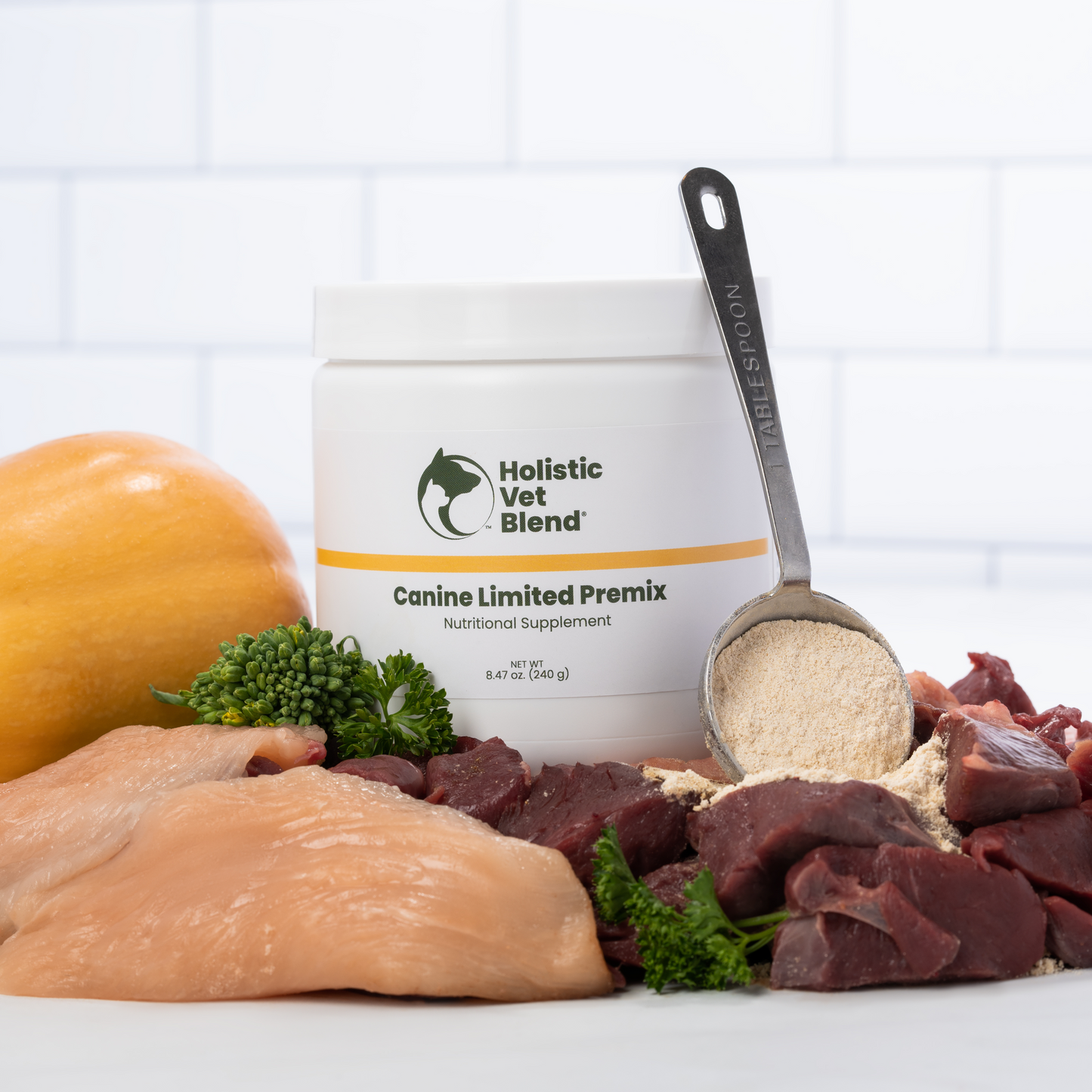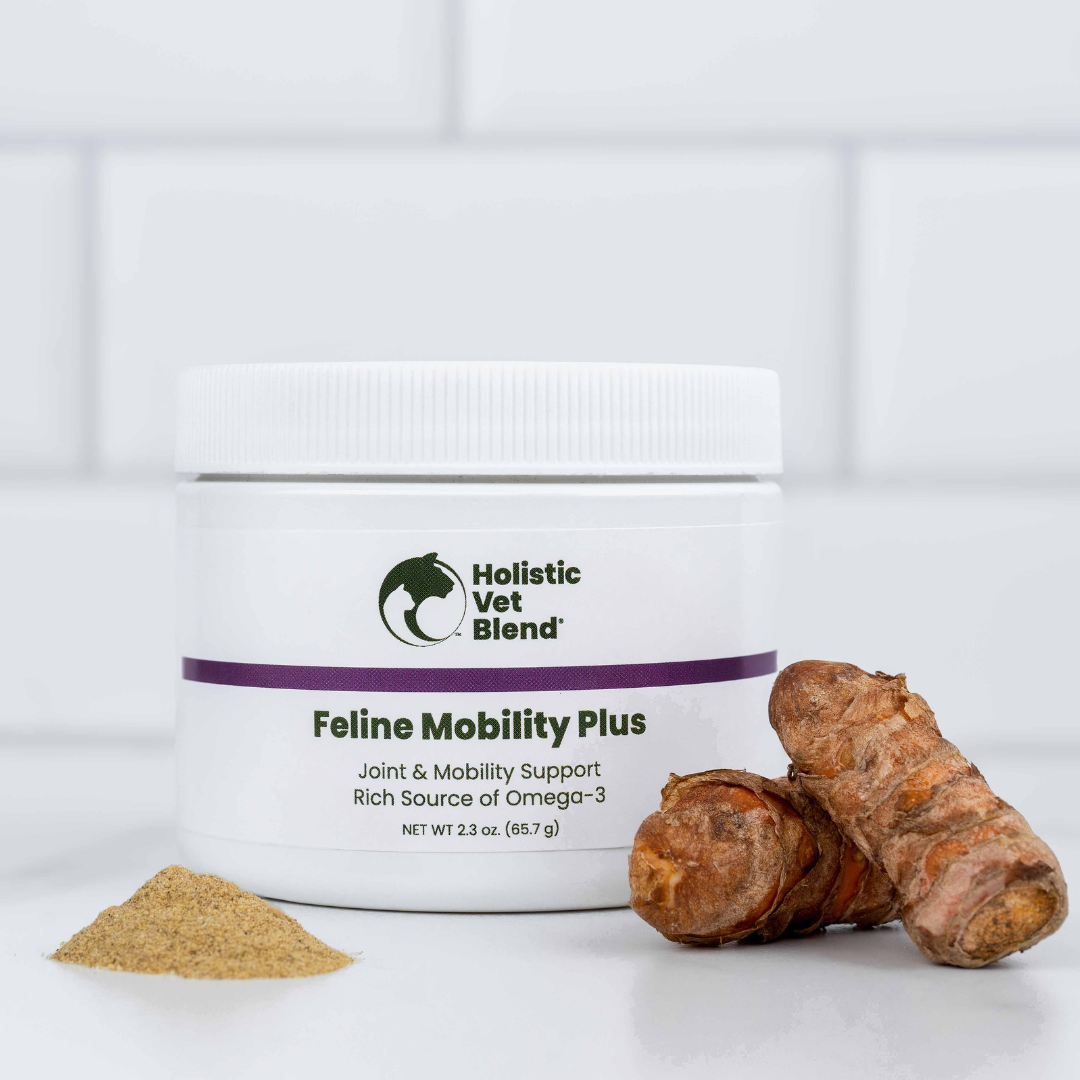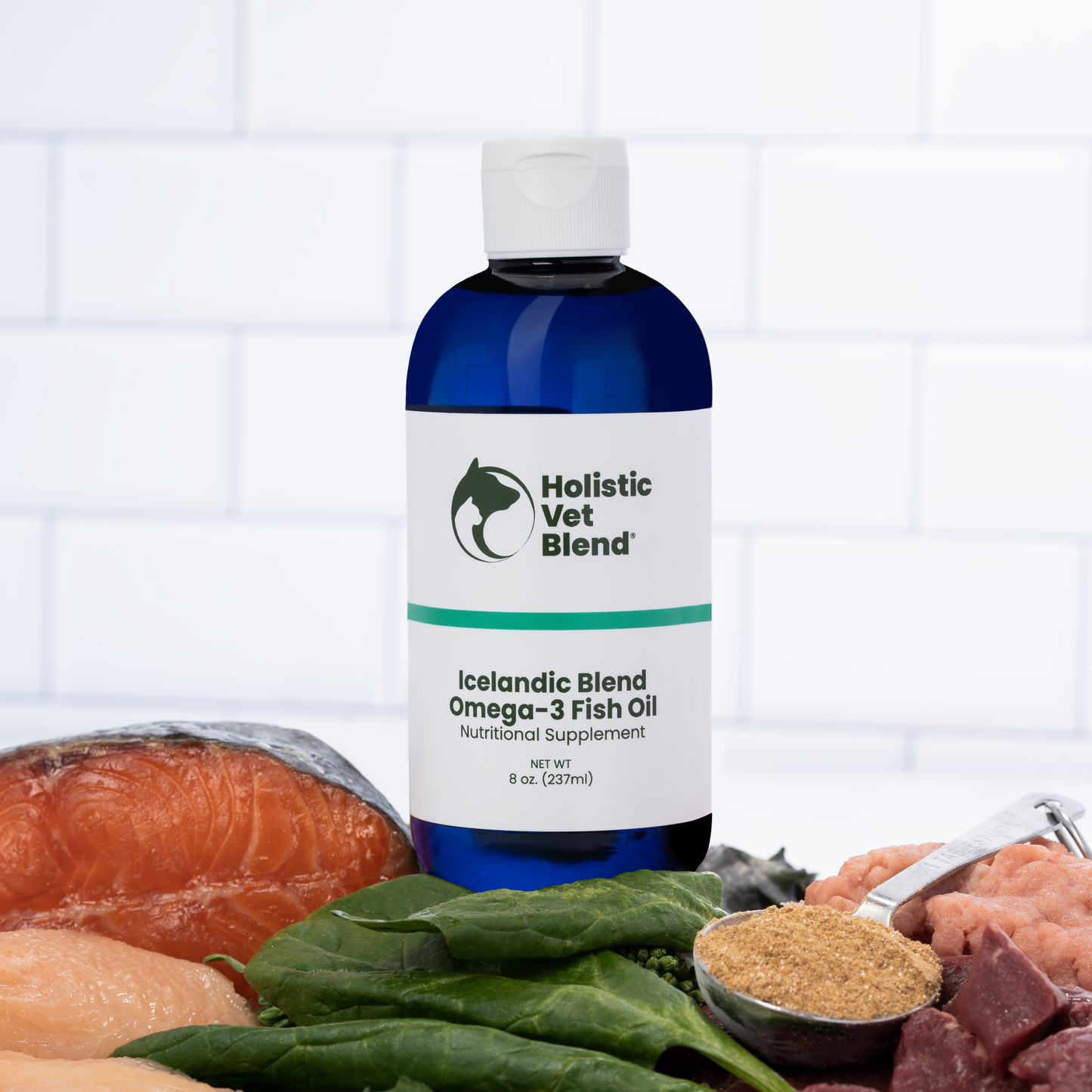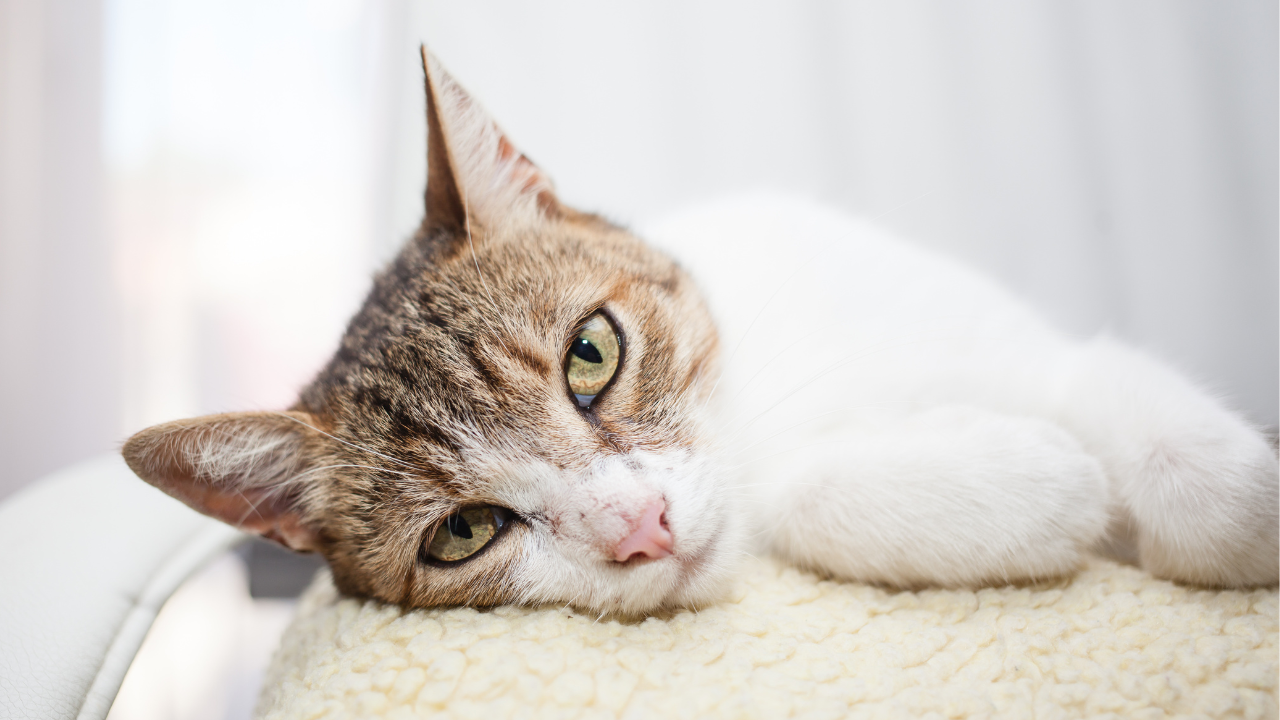
Key Highlights
- For cats, natural pain relief can come from homeopathic remedies, adjusting their diet and supplements, using heat or cold therapy, and trying out different massage techniques.
- Spotting the signs of pain in our furry friends is crucial. This includes changes in how they act and physical symptoms that weren't there before.
- By getting to know what causes their discomfort—like injuries or ongoing health issues—we're better equipped to choose the right way to help them feel better.
- Sometimes, if a cat's dealing with really bad or long-lasting pain, we might need a vet's help along with some prescribed medicine.
- Talking to a veterinarian who makes house calls could give us some great advice tailored just for managing our cat’s discomfort at home.
- Always keeping an eye on how comfortable and happy our cats are plays a big part in offering them natural ways to ease their pain which ultimately helps improve their life quality.
Introduction

Cats are a challenge when it comes to interpreting if they are experiencing pain. They are masters at masking it during their examination at the veterinary clinic. Thus many cats suffer simply because we may miss the subtle signs of pain that they may exhibit, such as decreased jumping, sleeping more, mild stiffness, and playing less. These subtle signs may lead us to think this is normal aging, but as responsible cat owners, it is essential to be vigilant for any signs of discomfort in our feline companions. Understanding their body language plays a pivotal role in recognizing any signs of pain they may be experiencing. Additionally, incorporating natural pain relievers such as laser therapy and prescription medication can be beneficial for cats experiencing pain.
Many pet owners prefer natural methods for easing cat pain. By trying natural methods first, we can avoid the potential side effects of anti-inflammatory medications that can tax the kidneys and potentially worsen kidney disease. And it goes without saying that administering medication regularly to cats can be challenging. Fortunately, most cats will accept homeopathic remedies well, making it a safe and effective alternative to prescription pain medications for cats with kidney disease.
In this blog post, we'll explore how you can use homeopathic remedies, also known as home remedies, to help your cat with pain at home. This is just one of the many ways we may opt to try when we are concerned our pet is in pain. For a comprehensive review of different possible modalities, including holistic and traditional medicine, please refer to this blog post. If you find that one remedy is not working you may find that there are better alternatives for your pet's unique situation, in conjunction with your vet's treatment plan.
Understanding Cat Pain and Homeopathic Remedies

Cats feel pain just like we do, whether it's because they got hurt, had an accident, or are dealing with long-term health issues such as arthritis or chronic pain. It's really important to figure out why a cat is in pain, whether it's from injuries, diseases, or underlying medical conditions, so we can help them feel better. Especially when the pain sticks around for a while, it can make life pretty tough for our furry friends.
Lately, more and more people are turning to natural ways to ease their cats' discomfort. Homeopathic remedies are getting quite popular due to their gentle approach that aims at boosting the body’s own ability to heal itself and bring everything back into balance. These treatments work on the idea that what causes symptoms in a healthy person might actually cure similar symptoms in someone who is sick if given in very small amounts.
With homeopathy, there’s hope for treating various kinds of problems causing your cat discomfort - be it joint ache or muscle pains; dental troubles; or even skin irritations. By digging deep into what specifically makes cats suffer from these pains and considering natural solutions like homeopathic methods could mean providing safer relief options for them.
For those looking into this kind of care plan seriously should think about working alongside vets who specialize not only traditionally but also have knowledge about holistic practices – together creating a tailored treatment strategy focusing on your kitty’s particular health challenges and needs related directly towards improving how they manage feeling unwell.
Identifying Signs of Pain in Cats: From Lethargy to Aggression

Understanding when cats are in pain can be tough because they're really good at hiding it. But, by keeping an eye on the little things that change in their behavior and watching out for any physical signs, pet owners can figure out if their furry friends are hurting.
Changes in how a cat acts could mean it's feeling pain. This might look like being more tired than usual, having a decreased appetite, staying away from people or other pets, cleaning themselves too much or getting snappy if you touch them somewhere that hurts. On top of this, cats might limp, seem to prefer one leg over another or act like it hurts when someone picks them up or touches them, which could be a sign of pain. It is important to recognize these changes in behavior as potential signs of pain and have your pet checked out by a veterinarian.
For those who have cats as pets; paying close attention and noticing anything unusual about your cat's actions is key. If something doesn't seem right or your cat seems upset for no clear reason; taking them to see a vet is a smart move. Catching and dealing with these subtle changes early means you can help ease your cat’s discomfort sooner rather than later which helps keep them happy and at their ideal weight.
The Basis of Homeopathic Pain Relief: How It Works for Cats

Homeopathic pain relief for cats focuses on treating the whole cat, not just the pain they're feeling. It's all about getting their body to heal itself naturally by finding a balance. To do this, homeopathic remedies are used that match up with what each cat needs based on things like how much they weigh and their overall health. These remedies can include physical therapy techniques, such as gentle massage and pet acupuncture, to help improve circulation and relieve muscle tension in cats.
With these treatments, it's really specific to each cat. The kind of remedy chosen depends on various factors including what hurts them and how healthy they are otherwise.
You can find homeopathy for cat pain in different forms - pills, liquids, or stuff you put right on their skin. These treatments use very small amounts of natural ingredients from plants or animals, which help kickstart the cat’s own healing powers.
It might seem a bit mysterious how exactly these remedies work since it involves stimulating something called the vital force in cats to encourage self-recovery.
For pet owners looking into this holistic approach for natural pain relief, talking with a vet who knows about both traditional and integrative medicine is key. They can come up with a treatment plan that’s just right considering your furry friend's unique health conditions and issues related to managing their body weight or dealing specifically with types of pain. Make sure to get our FREE guide on Managing Your Pet’s Pain Naturally.
Key Homeopathic Remedies for Cat Pain
Homeopathic remedies are a natural way to ease cat pain, tackling various discomforts by using substances in very small amounts. These help kickstart the body's own healing process.
For cats dealing with pain, here are some go-to homeopathic options:
- Traumeel: This is great for easing joint pain, muscle soreness, and reducing inflammation.
- Arnica: It works wonders for trauma and bruises by speeding up healing and cutting down on pain.
- Rhus Toxicodendron: Especially good for older cats suffering from joint pains and stiffness.
Each of these remedies has its special benefits depending on what your cat needs. By adding glucosamine and chondroitin supplements to your cat’s diet, you can help lubricate their joints, reducing friction and preventing cartilage in the joints from breaking down. Both of these supplements are available in capsule supplement form, or you can add them to your cat’s food or treats. Before picking one, it's wise to talk with a holistic vet who can guide you towards the right choice based on your furry friend’s specific issues related to pain relief, including joint or general cat pain through natural means like these mentioned homeopathic remedies. It's important to consider using multiple types of pain control, including natural pain relief, to effectively manage chronic pain such as arthritis in cats.
Traumeel: A Comprehensive Pain Solution
Traumeel is a well-liked natural remedy that helps ease pain in cats. It's made to tackle all sorts of pains, from joint issues and muscle aches to swelling, making it a go-to for managing your cat's discomfort. With Traumeel, you're looking at:
- Relief from various types of pain.
- Ingredients that come from nature like plants and minerals.
- The perk of being safe for your cat over the long haul with hardly any bad reactions.
- Simple ways to give it to your cat, either as a pill or something you apply.
For dealing with cat pain, including things like joint pain, adding Traumeel into their care routine can really make a difference. But remember, chatting with an expert in holistic animal care is key before starting any new treatment plan just to be sure about the right amount and how long you should use it for achieving effective pain relief without unwanted side effects.
Arnica: For Trauma and Bruising
Arnica comes from the Arnica montana plant and is a natural way to help cats who are hurt or bruised. For hundreds of years, people have used it to make healing faster and lessen pain that comes with injuries.
Here's why Arnica is good for helping with cat pain:
- It works well at easing pain and swelling when your cat gets injured or bruised.
- Helps wounds heal quicker so your pet can recover faster.
- You can find it in different forms like creams, gels, or ointments which makes it easy to use.
Using Arnica as a safe, natural method for dealing with your cat's discomfort is smart. But remember, talking to a holistic vet first is key. They'll guide you on how much to use and the best way to apply it based on what’s going on with your furry friend’s health.
Rhus Toxicodendron: For Joint Pains and Stiffness
Rhus toxicodendron, often called poison ivy, is a natural remedy that's good for helping cats with joint pain and stiffness. This remedy comes from the poison ivy plant itself and has been used for a long time to help ease the discomfort that comes with arthritis and similar conditions affecting joints.
Here are some of its main benefits when it comes to easing cat pain:
- It works well at lessening joint pain and making stiff joints more flexible.
- Helps soothe the soreness tied to arthritis.
- Can make it easier for cats dealing with these issues to move around better.
Using Rhus toxicodendron can be a safe way to deal with your cat's joint problems naturally. But before you start any treatment, talking things over with a holistic vet is key. They'll help figure out just how much your furry friend needs based on their specific health situation.
Administering Homeopathic Remedies to Cats
When it comes to giving homeopathic remedies to cats, creating a treatment plan that fits their unique health needs is key. It's really important for pet parents to stick to the right guidelines so these natural solutions can work safely and effectively.
Here are some pointers on how this should be done:
- Getting advice from a holistic veterinarian is crucial. They'll help figure out which remedy and dose will best tackle your cat's pain and health issues.
- Make sure you're using the remedy as recommended, whether that means giving tablets, liquids, or applying something topically.
- Keep an eye on how your cat reacts to the treatment. You might need to tweak the dosage or length of time they're taking it based on what you see.
- Always watch over your cat’s general health closely during this time. If anything seems off or worries you, get in touch with a vet right away.
By teaming up with either a holistic veterinarian or integrative veterinarian who knows about natural pain relief methods like homeopathic remedies well enough; pet parents can feel more at ease when trying such treatments for their furry friends' pains.
Tips for Applying Remedies to the Gums
Putting homeopathic remedies on your cat's gums can be a simple and effective way to give them the needed treatment. The gums get a lot of blood flow, which means the remedy gets into their system quickly.
There are different sizes of homeopathic remedies.
Here are some tips for putting these remedies on your cat's gums:
- With a clean finger or soft brush, put the remedy onto specific points along the gums.
- To reach their gums easily, gently lift up your cat’s lip and dab just a little bit of the remedy there.
- Make sure your kitty doesn't just swallow it right away; let it sit in their gums for a few minutes so it really sinks in.
- Watch how your cat reacts after getting the remedy. You might need to change how much you use or how long you treat them based on what you see.
Using this method to apply homeopathic remedies directly onto the gum area is handy and works well. But remember, talking with an expert holistic vet is key to figuring out exactly what approach and amount will best suit your furry friend’s health needs.
Mixing Homeopathic Solutions in Water
Putting homeopathic solutions in water is a handy way to give medicine to cats, especially if they don't like taking pills directly. By mixing the solution into their drinking water, your cat gets the treatment bit by bit all day long.
Here are some pointers for doing this right:
- Before anything else, talk with a holistic vet who can tell you exactly what dose and type of remedy will help with your cat's particular health issues.
- To make sure the remedy doesn't get too weak, use a different bowl just for this medicated water.
- Follow the instructions on how much of the solution to add to the bowl and stir it up well.
- Keep an eye on how much your cat drinks and watch out for any changes after they start having this special water.
Mixing these solutions into your cat’s drink is easy and works well. But remember, always check with a holistic veterinarian first so you know you're giving them what's best for their specific situation.
The Importance of Avoiding Food for Administration
When you're giving your cat homeopathic remedies, it's key not to feed them right before or just after. This is because some foods might mess with how well the remedy works.
Here are a few pointers on keeping food away when using homeopathic remedies for cats:
- Make sure your cat doesn't eat anything for about 10-15 minutes before and after getting their remedy.
- Try not to give your cat any snacks or meals right before or immediately following the treatment.
- Keep an eye on how your cat reacts to the remedy, especially looking out for any digestive issues.
By having your cat fast a little while before and after taking homeopathic treatments, you help make sure they work as best as they can. Still, talking with a vet who knows about holistic care is crucial so that you get the dosing and timing right based on what’s going on health-wise with your kitty.
Distinguishing Between Traumeel and Singular Homeopathic Remedies
When talking about homeopathic remedies for easing cat pain, it's crucial to understand the difference between Traumeel and other single-target remedies. Single-target options focus on one symptom or issue at a time, but Traumeel covers a broader spectrum of discomforts.
With its multi-component strategy, Traumeel tackles various facets of pain relief and control. This makes it an appealing option for cat owners seeking an all-encompassing approach to manage their furry friend's discomfort. However, before deciding on this treatment plan, getting advice from a holistic vet is key to ensure it fits your cat’s specific health needs and condition.
Traumeel’s Multi-Component Advantage for Various Pain Types
Traumeel is like a Swiss army knife for easing different kinds of pain in cats. It mixes up a bunch of homeopathic remedies, making it a go-to option for tackling all sorts of discomfort.
Here's why Traumeel stands out when it comes to helping your cat feel better:
- With its mix-and-match approach, Traumeel uses various homeopathic solutions to hit pain from every angle.
- Whether we're talking about achy joints, sore muscles, or swelling, this remedy has got your cat covered.
- By focusing on more than one aspect of pain at once, Traemeel offers an all-around strategy that really gets to the root of what's bothering your furry friend.
The blend that makes up Traemele gives it an edge in soothing different types of ache and pains cats might face. But remember - before you decide this is the right way to help your kitty out with their ouches and owies make sure you chat with a vet who knows their stuff about natural treatments. They'll help tailor just the right treatment plan considering what’s specifically going on with your pet.
When to Choose Singular Remedies Over Traumeel
- Using simple treatments like applying heat, using cold packs, or giving your cat a soft massage can really help ease pain in certain spots on their body.
- For pains that are just in one spot, maybe a sore joint or muscle, these methods can be very helpful.
- When you're trying to decide if you should use these single treatments or go for something like Traumeel, think about what your cat specifically needs and the plan you have for treating them.
- Traumeel is made from several natural things mixed together to help with pain all over and works well for different kinds of problems.
- If your cat's pain isn't just in one place but more spread out, then Traumeel might be the right choice.
- Talking with a vet will guide you towards whether sticking to targeted therapies like cold therapy or choosing Traumeal fits better into the treatment plan for providing effective pain relief in those specific areas where your furry friend hurts.
Determining the Right Potency and Dosage
Finding the right strength and amount of natural pain relief for your cat is really important to make sure it's safe and works well.
- When we talk about how strong a remedy is, that's what potency means. This can change based on the type of natural pain relief you're using and what health issues your cat might have.
- By talking with a vet who knows about holistic or integrative care, you can figure out just how strong the remedy needs to be for your pet.
- How much of this remedy to give depends on things like how heavy your cat is, their age, and their general health condition.
- It's key to stick to the dose instructions given by your vet or those listed on what you bought.
- Keeping an eye on how well your cat does after starting treatment helps a lot. If there need to be any changes in strength or amounts given, always check with a vet first.
Understanding Potency Levels in Homeopathic Remedies
In the world of homeopathic remedies, there are different strengths available, and knowing about these strengths is key when you're trying to help your cat feel better from pain.
- With these remedies, the strength level tells us how much the original ingredient has been diluted.
- When we talk about higher strength levels, it means there's more dilution involved. These are typically chosen for ongoing or serious issues.
- On the flip side, lower strength levels aren't as diluted and are usually picked for less severe or short-term problems.
- The choice of a remedy's strength can really make a difference in how well it works for easing your cat’s discomfort. It’s crucial to pick one that matches what your cat needs based on their specific situation and how bad their pain is.
- By talking with an expert like a holistic vet or someone who knows all about homeopathic treatments, you can be sure to find just the right solution for managing your furry friend's pain relief.
Adjusting Dosages According to Your Cat’s Specific Needs
When it comes to giving your cat natural pain relief, getting the dose right is key. This means you need to think about a few things like how much they weigh, their age, health status, and how bad their pain is.
- With factors such as weight and overall well-being playing a role in determining the correct amount of medicine for your furry friend's discomfort.
- Following what the vet says or what’s written on the box really closely matters a lot.
- On top of that, what your cat eats might change how well these treatments work. Some foods or extra vitamins could mess with them. That's why talking over your pet's meals with a vet makes sense.
- Keeping an eye on how your cat reacts after taking this kind of remedy tells you if any changes need to be made by someone who knows lots about animal health care - like vets do!
- Sometimes chatting with vets who use both traditional and more nature-based approaches can make sure whatever treatment plan you go for fits just right for what specifically troubles them.
Creating a Supportive Environment for a Cat in Pain

To help a cat that's hurting, it's essential to make them feel comfortable and safe. Here are some ways you can do just that:
- By setting up a quiet, soft spot for your cat to chill, you're helping ease their pain and lower their stress.
- For cats having trouble getting around, adding ramps or platforms makes moving about much easier.
- Gently petting and massaging your cat and holding them carefully can bring some cats with mild pain some comfort.
- Stress amplifies pain, so giving your cat privacy and separating them from children and other pets that might stress them is also helpful.
- Provide a litter pan that is easy to get in and out of, that they have easy to get to resting spots, and accessible food and water bowls.
Observing Your Cat’s Response to Treatment
Watching how your cat reacts to pain relief is key in figuring out if it's working and if any changes need to be made. Here are some things you should do:
- Keep an eye on your cat for any behavior changes, whether they're more or less active than usual, and look for signs of pain like limping or not eating as much.
- Look out for the less obvious signs of discomfort too, such as different grooming habits or making noises when certain spots are touched.
- Write down anything new about their symptoms getting better or worse and talk about these notes with your vet.
- Talking regularly with your vet helps make sure the treatment plan stays right on track based on how well your cat is doing.
- Depending on how things go, your vet might suggest extra tests or tweaks to the treatment plan considering both the response of your cat and its overall health condition.
When to Consult a Vet for Further Assistance

When your cat is in pain, it's really important to talk to a vet if the pain doesn't go away or gets worse.
- It's helpful if you can get video of your cat's behavior at home and bring it to your veterinarian so they can observe for signs of arthritis. Cats can sometimes be difficult to diagnose when they are in pain.
- Sometimes, cats have health problems that need extra care or special treatment plans that only a vet can give.
- If trying things at home isn't helping with the pain, a vet can tell you about medicines or other ways to help.
- Getting help early and managing health issues right can stop more problems and make life better for your cat.
- It's also key to keep going back to the vet so they can see how your cat is doing and change the treatment plan if needed.
Conclusion
When we talk about helping our cats feel better naturally at home, it's important to notice when they're hurting and think about using natural remedies. Things like Traumeel, Arnica, and Rhus Toxicodendron can really help with different kinds of pain. It's key to give these treatments carefully, make sure your cat is comfy, watch how they react to the treatment, and know when it's time to get a vet involved in their pain management. By doing all this stuff for them, you're working towards making them feel less pain, which makes their life better overall. Always put your feline friend’s health and happiness first.
Frequently Asked Questions
Are there any side effects of homeopathic remedies for cats?
Homeopathic remedies are usually safe for cats and they tend to handle them pretty well. But, it's true that some cats might react differently or be sensitive to certain ones. With this in mind, keeping an eye on your cat and talk to a vet if your pet is not responding, and especially if your pet does not have a diagnosis. Sometimes a response to a pain remedy will help you identify that your stoic cat is suffering from arthritis.
Can these remedies be used alongside conventional medications?
Homeopathic remedies are safe to use alongside conventional medications. If in doubt about your cat's response, reach out to your veterinarian.



